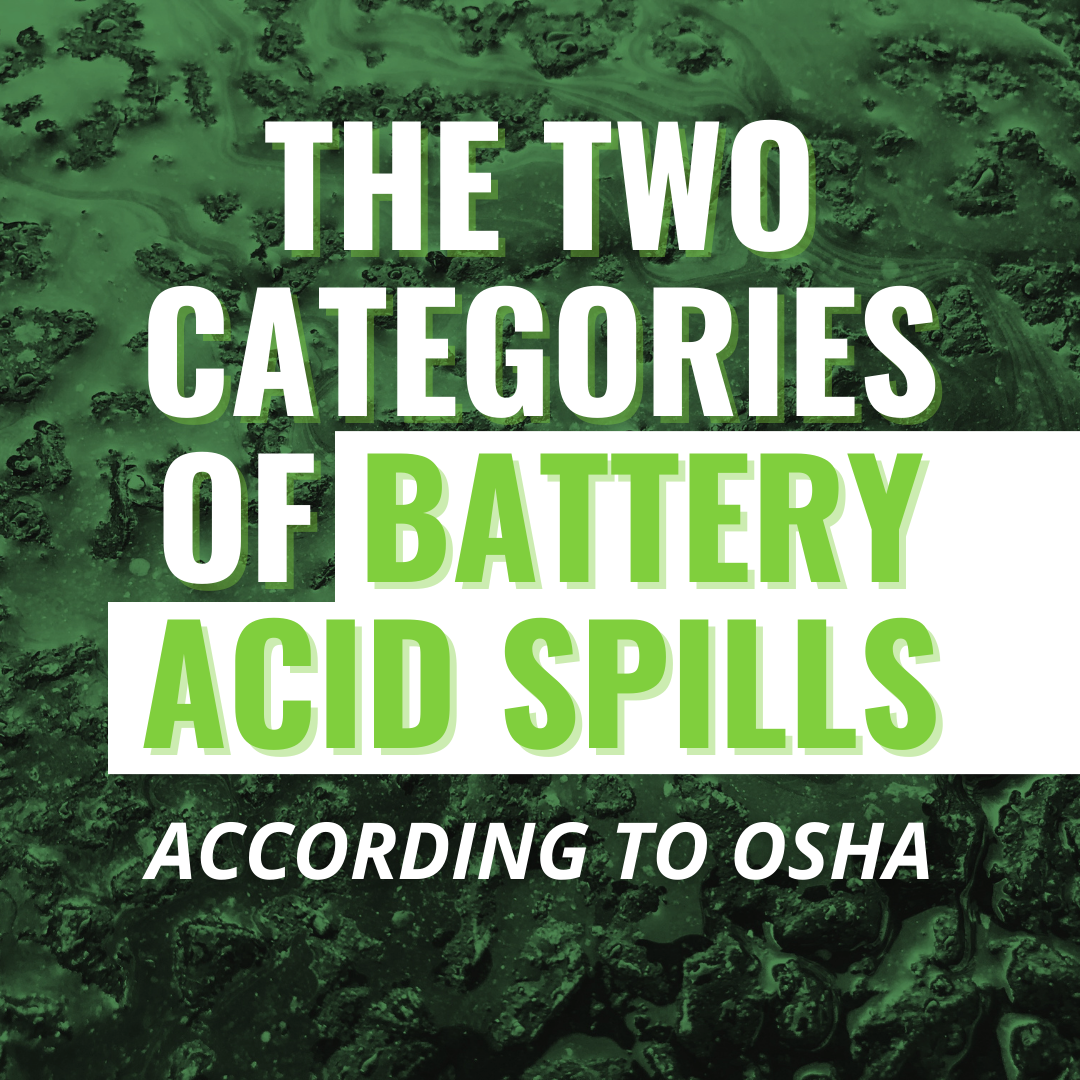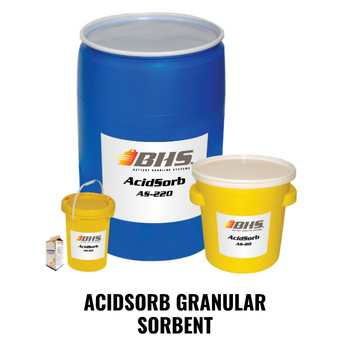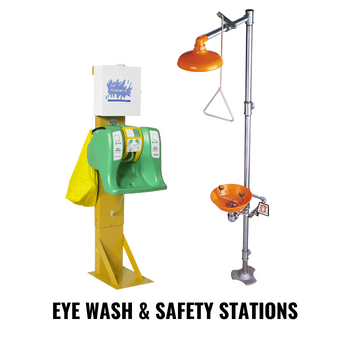We use cookies to make your experience better. To comply with the new e-Privacy directive, we need to ask for your consent to set the cookies. Learn more.
The Two Categories of Battery Acid Spills, According to OSHA
Is your facility prepared for a battery acid spill?
The Occupational Safety and Health Administration (OSHA) sets standards for handling and containing hazardous waste. Battery acid certainly qualifies as hazardous — and given that lift trucks (and their lead-acid batteries) are commonly used in industrial settings, employers should understand how OSHA categorizes battery spills.

The administration’s Hazardous Waste Operations and Emergency Response (HAZWOPER) standard defines two types of hazardous material releases:
- Incidental spills do not pose a significant safety or health hazard to employees in the immediate vicinity or to the employee performing cleanup. Additionally, an incidental spill does not have the potential to become an emergency within a short time frame.
- Emergency spills pose an immediate health or safety hazard, or have a potential to become such a hazard. A spill may be an emergency depending on the properties of the hazardous material (in this case, battery acid), the size of the spill, the size of the work area, the availability of personal protective equipment (PPE), and the worker’s spill response training.
By understanding the distinction between these two types of spills, you can ensure that your operation meets OSHA’s battery acid spill kit requirements — and provide your team with the necessary equipment to contain spills safely and efficiently.
Battery Acid Spills Are Not Always Emergencies, But Require Prompt Attention
It’s important to note that the HAZWOPER standard applies to a limited number of employers. In industrial settings, a minor lead-acid battery spill will almost certainly qualify as incidental, not as an emergency.
This article isn’t intended as legal guidance. However, OSHA has addressed the differences between “emergencies" and “incidents" in advisory letters. As one of those letters notes:
“An ordinary spill that can be safely handled by the workers is not an emergency. Such employees must have the proper equipment and training under other OSHA standards such as the Hazard Communication Standard.”
OSHA explicitly requires a HAZWOPER emergency response when a situation results in the “uncontrolled release of a hazardous substance" that poses an immediate danger to life and health.
Under normal circumstances, a battery acid spill can be safely handled by workers, and with quick containment, it doesn’t pose an immediate threat. However, this is largely dependent on two factors:
- If employees have not received appropriate spill response training, they should not (and cannot) be tasked with cleanup.
- PPE and other cleanup equipment. Workers must have access to PPE, along with facilities for flushing and neutralizing electrolyte.
Below, we’ll take a closer look at each of these factors and identify products that can help you run a safe and productive facility.
OSHA Training Requirements for Battery Acid Spill Response
OSHA requires employers to provide workers with accurate information about chemical hazards, along with appropriate training. The definition of “appropriate" training can change depending on the size and classification of the spill.
Before addressing emergency spills, workers must complete HAZWOPER training. This is generally an intensive process, depending on the training level. For example, the operations level, which enables workers to contain the release and prevent exposures, requires eight hours of training.
Fortunately, incidental spills do not require HAZWOPER training. However, employers must comply with OSHA 1910.132(f), which establishes general requirements for using PPE.
This standard ensures that workers know:
- When PPE is necessary for completing a task.
- What PPE is necessary for each task.
- How to properly don, doff, adjust, and wear PPE.
- The limitations of PPE.
- The proper care, maintenance, useful life, and disposal of PPE.
Employers must also provide “refresher" training to ensure that workers have a functional knowledge of these concepts.
For a more detailed description of each area of training, read our article: Creating a PPE Training Program: OSHA PPE Training Requirements.
To safely address the hazards posed by lead-acid batteries, your training program should also provide information about the location of other spill response supplies (such as absorbent pads and chemical neutralizers). Review OSHA’s Hazard Communication Standard (HCS) for additional guidance.
OSHA Equipment Requirements for Battery Acid Spill Response
Regardless of the size of the spill, battery acid is an extremely hazardous substance. Direct contact with the liquid can cause severe blindness and burns.
Needless to say, workers must wear PPE provided by their employer, even when handling smaller spills. Additionally, battery acid must be properly neutralized prior to cleanup, which necessitates a neutralizing agent.
PPE for Battery Acid Spill Cleanup
As we’ve discussed in other articles, employers are responsible for supplying appropriate PPE — not workers.
OSHA 1910.132 includes general requirements for chemical hazard PPE. Employers must perform a hazard assessment, select appropriate PPE for each hazard, and communicate their selection decisions to employees.
To make outfitting easier, Solus Group carries a variety of PPE kits designed to meet the requirements of OSHA standard 1926.441(a)(5). Our standard PPE Kit includes:
- Chemical splash goggles
- A chemical splash face shield
- Disposable aprons
- HAZ-MAT boots
- Neoprene glove
To explore other options, read: Which PPE Kit Is Right For Your Application?
Acid Neutralizing Agents
While baking soda and soda ash solutions can be used to neutralize battery electrolytes, forklift batteries contain as much as 432 pounds of sulfuric acid.
Even if you’re addressing a moderate spill, your goal is to contain the acid as quickly as possible — and you don’t want workers spending their time mixing baking soda solutions while the spill spreads.
Dedicated neutralizing agents such as AcidSorb are a better option. Available as granular sorbent, AcidSorb changes color to indicate a safe pH level, providing a visual indication of neutralization.
Eye & Safety Stations
Lift truck battery rooms must include facilities for “flushing and neutralizing spilled electrolyte" to meet OSHA standard 1910.178(g)(2). Solus Group carries a variety of portable and mounted eyewash stations, which can play a critical role in mitigating on-the-job injuries.
Signage for Identifying PPE
If workers can’t find the necessary supplies, they can’t start cleanup. The best practice is to keep all materials in a visible, accessible location within the battery room and in other areas where spills may occur.
Signage should clearly indicate the location of PPE and spill response supplies. Solus Group carries Signage and Posting Kits in English and Spanish, designed to aid in compliance with OSHA and ANSI Z535 standards.
Outfitting Your Facility for Battery Spill Response
If your facility has a battery room, you’ll inevitably deal with smaller spills and drips on a regular basis. Proper battery maintenance can limit hazards, but in order to keep incidental spills from becoming emergencies, you’ll need appropriate outfitting and a detailed training plan.
For OSHA compliance, you’ll need to plan for potential hazards before they occur. Solus Group can help. Whether you’re building a spill response strategy for a warehouse, distribution center, cold storage facility, or any other operation, our spill response supplies can provide peace of mind — and help your team address spills the right way.
To speak with our sales team, call (314) 696-0200 or fill out our contact form.


